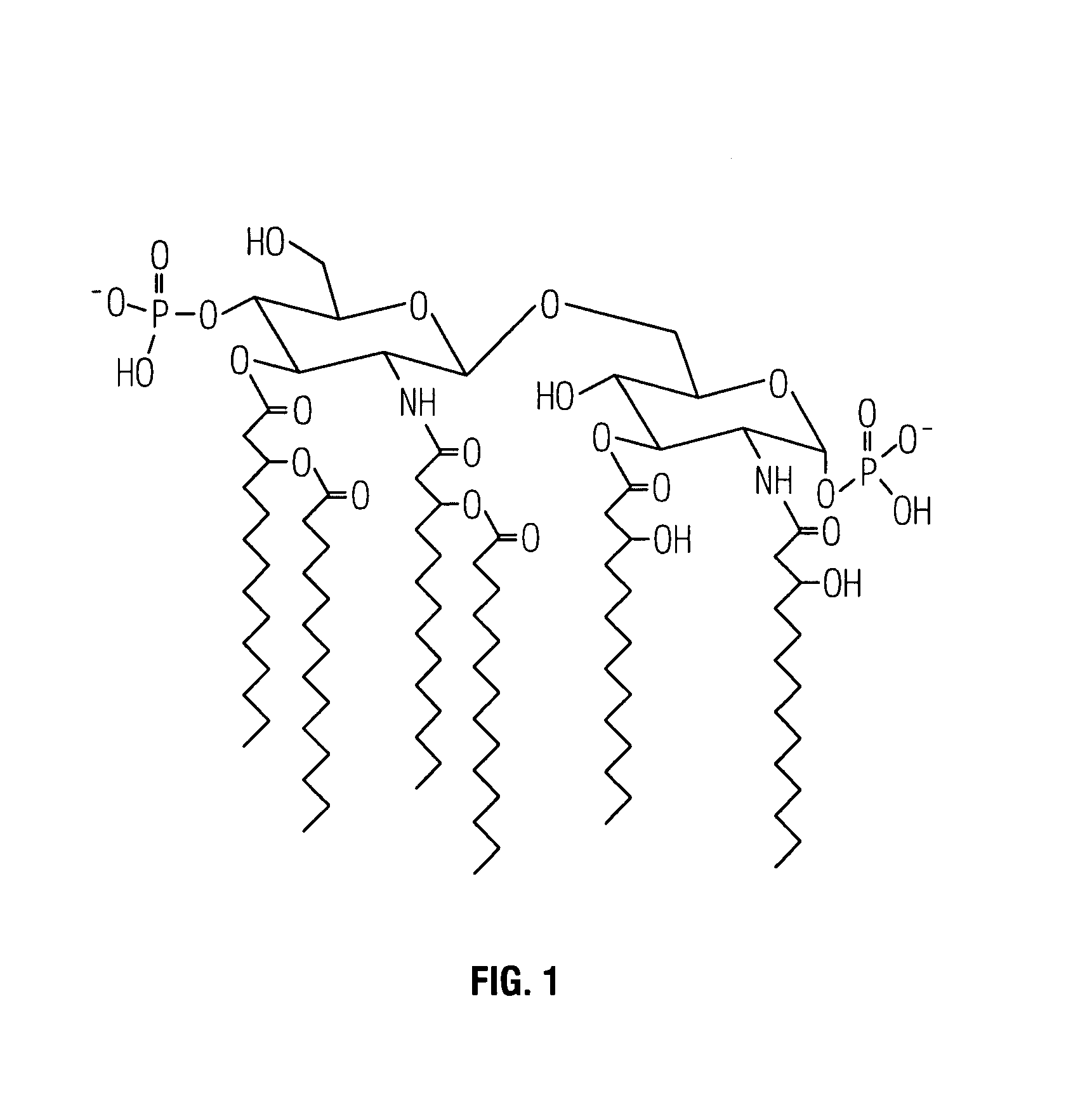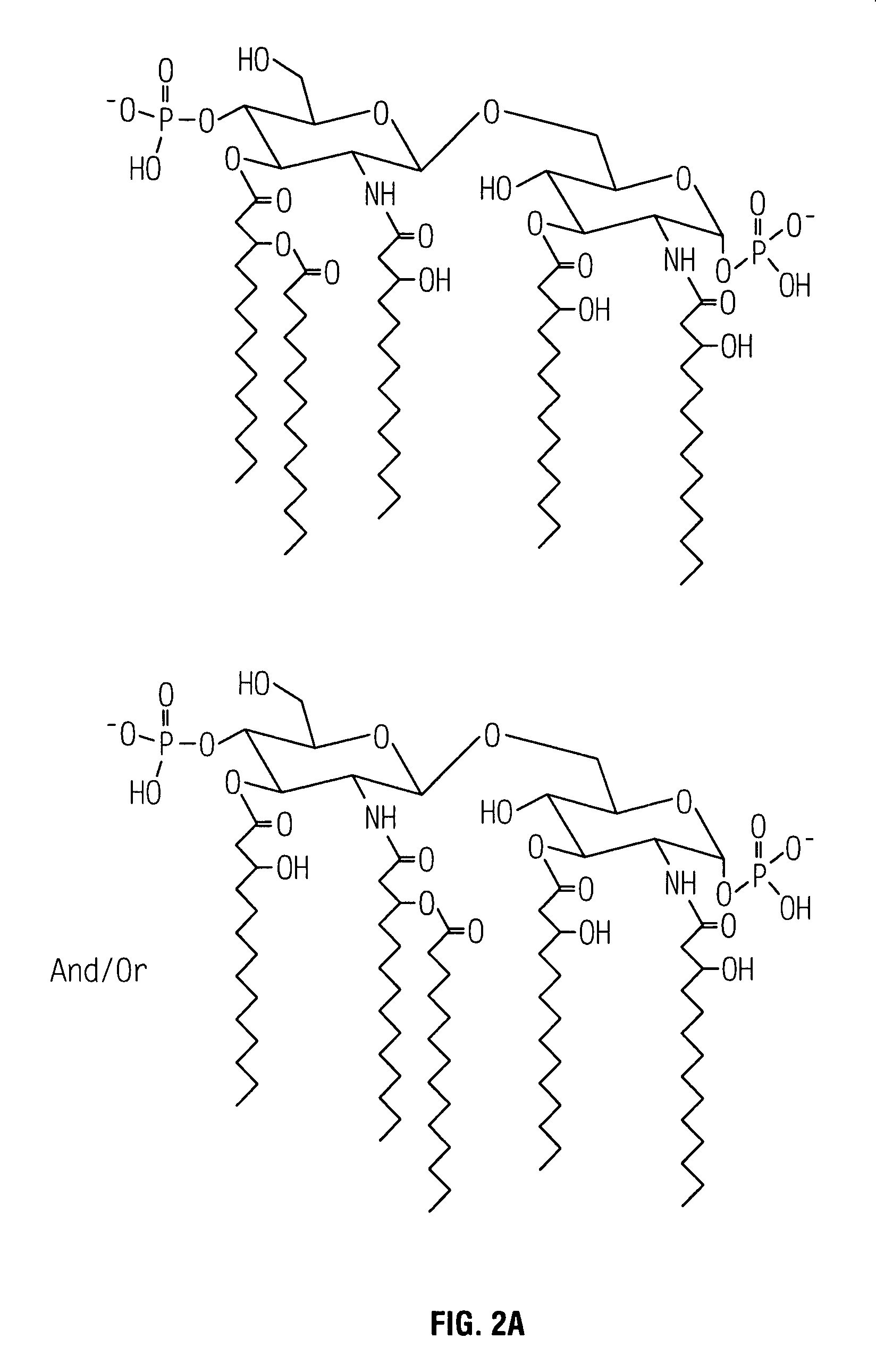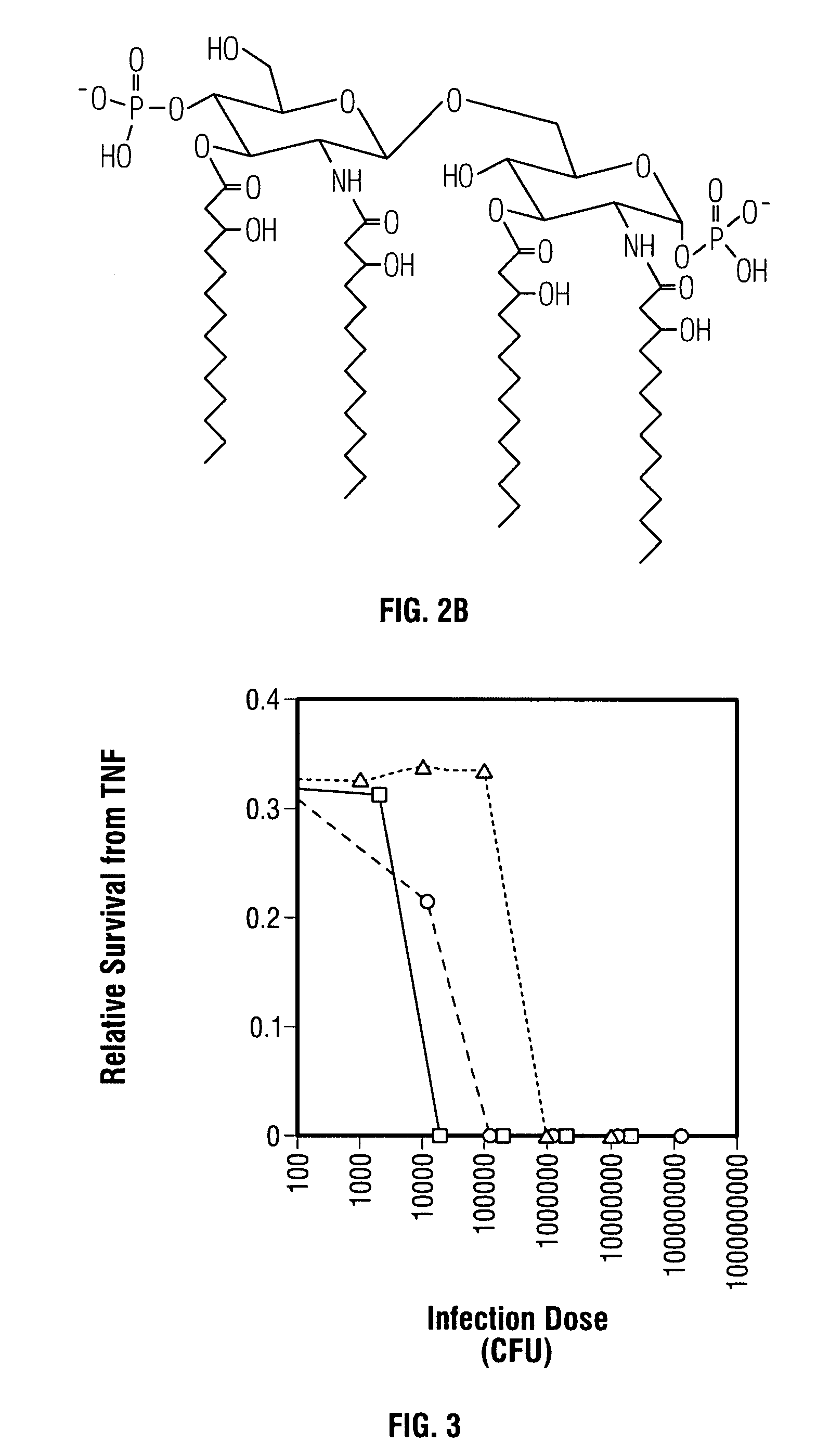Non-toxic mutants of pathogenic gram-negative bacteria
a pathogenic gram-negative bacteria and non-toxic technology, applied in the field of non-toxic mutants of pathogenic gram-negative bacteria, can solve the problems of inability to disclose the use of gram-negative bacteria, inability to induce antibody responses in vaccines such as lps or los, and inability to immunize active animals with lps or los, so as to reduce toxicity and reduce toxicity
- Summary
- Abstract
- Description
- Claims
- Application Information
AI Technical Summary
Benefits of technology
Problems solved by technology
Method used
Image
Examples
example 1
Identification of an htrB Gene, and Generation of htrB Mutants
[0034]By complementing a nontypable H. influenzae strain 2019 with a S. typhimurium rfaE mutant strain, the rfaE gene of H. influenzae strain 2019 was cloned (Lee et al., 1995, Infect Immun 63:818–824). Sequence analysis of the upstream region of the H. influenzae rfaE gene revealed an open reading frame highly homologous to the E. coli htrB gene. The H. influenzae htrB gene comprises 933 bases and encodes a protein, HtrB, of 311 amino acids (SEQ ID NO:1) and an estimated molecular size of 36 kilodaltons (kDa). Comparison of the deduced amino acid sequence of the H. influenzae HtrB with the E. coli HtrB revealed shared homology (56% identity and 73% similarity). Cloning the htrB gene of H. influenzae into a plasmid, and subsequent in vitro transcription-translation analysis, revealed that HtrB has an apparent molecular size of 32–33 kDa.
[0035]There are various standard techniques known to those skilled in the art for muta...
example 2
Characterization of htrB Mutants
Growth Characteristics
[0040]NTHi B28 and B29 strains were initially selected at 30° C., and were unable to grow at 37° C. With further passages at 30° C., the NTHi htrB mutants began to lose temperature sensitivity and demonstrated a slow rate of growth, as compared to NTHi 2019, at 37° C. However, for growth temperatures greater than or equal to 38.5° C., the temperature sensitivity remained for the htrB mutants.
[0041]It was reported previously that E. coli htrB mutants demonstrated a change in membrane permeability to various compounds including kanamycin and deoxycholate (Karow et al., 1992, supra). The NTHi htrB mutants were also tested for sensitivity to kanamycin and deoxycholate. Overnight cultures grown at 30° C. were then diluted and allowed to grow in the presence of 5 μg / ml kanamycin at either 30° C. or 37° C. At 30° C., no difference was detected in the growth rate between NTHi 2019 and the NTHi htrB mutant strains in the absence of kanamy...
example 3
Substantially Reduced Toxicity of HtrB Mutants
[0048]The effect due to the lack of one or more secondary acyl chains on the toxicity of a gram-negative bacterial pathogen was examined using a standard in vitro assay for measuring in vivo toxicity. Murine macrophage-like cell line J774, when stimulated by endotoxin, secretes TNFα. The amount of TNFα, a directly proportional to the toxicity of the stimulating LPS or LOS, can be measured by (a) removing the cell-free supernatant containing the TNFα; (b) adding the supernatant to a TNFα-sensitive cell line, such as WEHI 164; and (c) measuring the resultant cytotoxicity (See for example, Espevik et al., 1986, J Immunol Methods 95:99; Sakurai et al., 1985, Cancer Immunol Immunother 20:6–10; Adams et al., 1990, J Clin Microbiol 28:998–1001; Adams et al., 1990, J Leukoc Biol 48:549–56; Tsai et al., 1992, Cell Immunol 144:203–16; and Pfister et al., 1992, Immunol 77:473–6).
[0049]In this assay, adherent J774 cells were removed from culture, wa...
PUM
| Property | Measurement | Unit |
|---|---|---|
| temperature | aaaaa | aaaaa |
| temperatures | aaaaa | aaaaa |
| temperature sensitivity | aaaaa | aaaaa |
Abstract
Description
Claims
Application Information
 Login to View More
Login to View More - R&D
- Intellectual Property
- Life Sciences
- Materials
- Tech Scout
- Unparalleled Data Quality
- Higher Quality Content
- 60% Fewer Hallucinations
Browse by: Latest US Patents, China's latest patents, Technical Efficacy Thesaurus, Application Domain, Technology Topic, Popular Technical Reports.
© 2025 PatSnap. All rights reserved.Legal|Privacy policy|Modern Slavery Act Transparency Statement|Sitemap|About US| Contact US: help@patsnap.com



